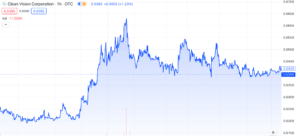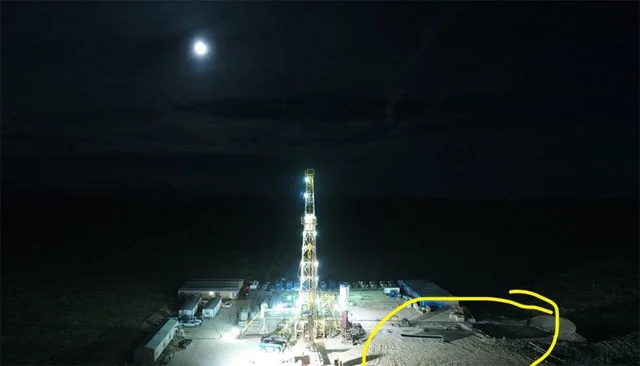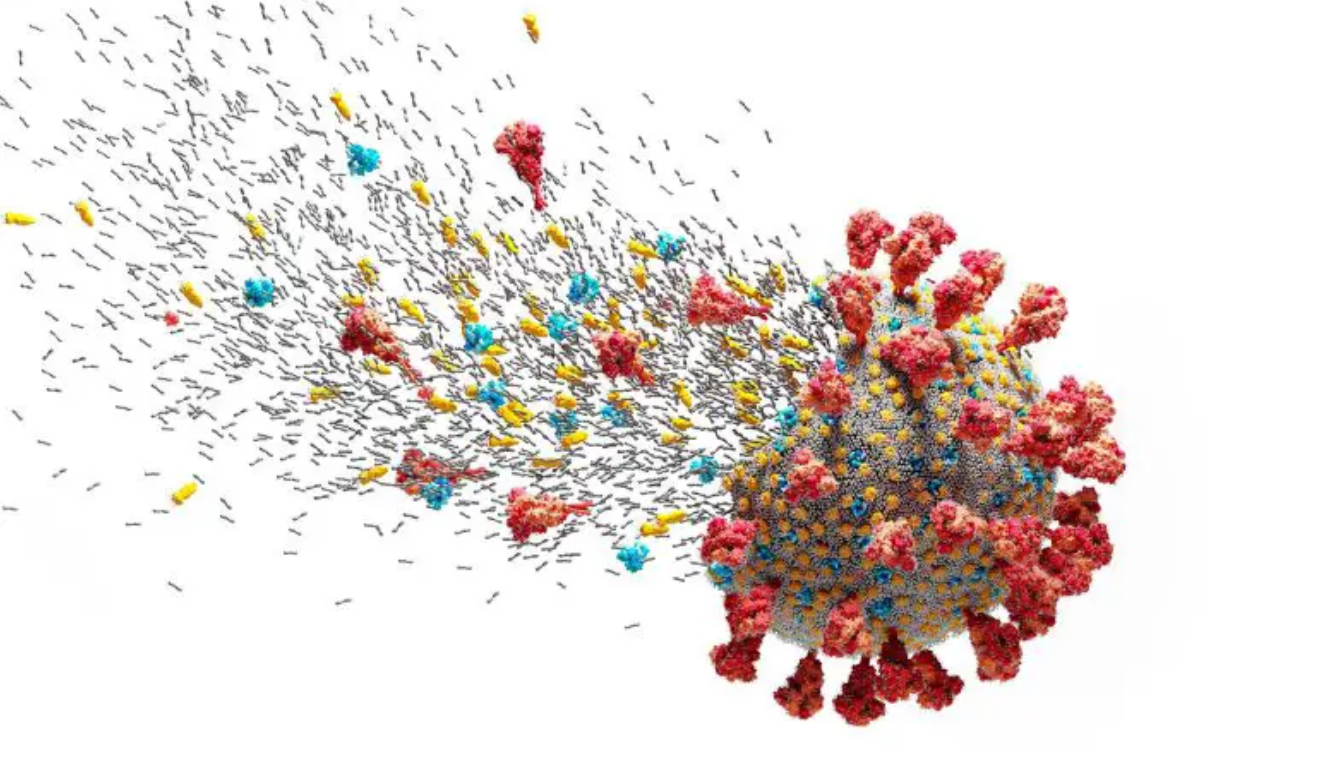Clean Vision Corporation (OTC: CLNV) has experienced several interesting developments recently, but it hasn’t noticeably influenced the market with any substantial gains. Nonetheless, we believe it’s worth providing an update on the company given it’s been a few months since our last mention. In today’s discussion, we’ll explore a variety of updates and their significance, with aim of providing insight on what to expect for 2024.

Background:
Clean Vision is led by Dan Bates, and their goal is to tackle the global plastic waste crisis head-on. Their wholly owned subsidiary, Clean Seas, has developed the Plastic Conversion Network (PCN), a groundbreaking technology aimed at diverting millions of tons of waste plastic from landfills, incineration, and oceans. The PCN converts this plastic feedstock into clean fuels and green hydrogen, significantly reducing reliance on fossil fuels and lowering the carbon footprint.
For a brief 2 minute overview on the company, feel free to reference the video CLNV’s subsidiary put together on YouTube. Here’s the link.
Clean Seas utilizes proven pyrolysis technology to produce environmentally friendly products, which are sold to multinational petrochemical companies, driving the circular plastic economy. Operational PCN facilities are already in place in Morocco and India, with additional conversion facilities in development across West Virginia, Arizona, and Southeast Asia. Long-term feedstock supply agreements exceeding one million tons of waste plastic annually have been secured at no cost.
Their recently trademarked brand, AquaH®, is produced in their PCN. According to the release, it offers a differentiated green hydrogen product from carbon-neutral sources. Currently, hydrogen is predominantly produced through methods that involve fossil fuels, which of course contributes to global carbon emissions. Furthermore according to Deloitte’s 2023 global green hydrogen outlook, this could be a $1.4T annual market by 2050.
$65 Million Plastic Conversion Facility:
CLNV is making big moves in West Virginia and according to the release on October 24th, 2023, they’ve brought in some serious players—CDI Engineering Solutions and ERM—to help out with their Clean-Seas West Virginia project.
CDI has over 70 years of experience integrating engineering, design, project support, procurement and construction management services to the energy, chemicals and electrical infrastructure markets.
ERM is the world’s largest advisory firm focused solely on sustainability, offering environmental, health, safety, risk and social expertise for more than 50 years with more than 8,500 dedicated professionals operating across 40 countries.
The plan is to kick things off in 2024, turning 100 tons of plastic every day into recycled plastics and clean fuels. It’s a hefty project with a $65 million investment, creating over 200 jobs initially. And they’re not stopping there—they want to scale up to 500 tons of plastic per day over time.
West Virginia Governor Jim Justice is also on board, throwing over $12 million in state incentives to support the project.
Governor Jim Justice made a reference to Clean Seas in his state of the union address. If you want to catch the mention, go to 34:15 in the video. The three minutes leading up to it are also worth reviewing.
Subscribe to Microcapdaily.com Right Now by entering your Email in the box below.
Launches Global Operations:
CLNV made another significant advancement, planning to launch waste plastic conversion facilities in the European Union, Eastern Europe, and Southeast Asia. This will be accomplished through their new subsidiary, Clean-Seas Partners UK Limited (CS-UK), who of course shares the same vision of creating sustainable solutions to the global plastic pollution crisis.
Under the leadership of Managing Director Shaun Wootton, CS-UK will play a crucial role in strategic project development and investment facilitation, leveraging established relationships in the Middle East, Southeast Asia, and Europe.
To fortify effective governance and strategic direction, CS-UK is assembling a distinguished board with internationally recognized figures in banking, sustainability, and energy. This approach aims to have a diverse and experienced board guiding CS-UK in realizing its vision of promoting sustainability and environmental stewardship across diverse regions.
$340 Million Bond Offering:
CLNV even announced they partnered with a global advisory firm, Grant Thornton, to issue up to $340 million in Green Bonds. This is the world’s sixth-largest network of independent accounting and consulting firms, employing 62,000 people in more than 130 countries and had revenues of $6.6 billion in 2021. These bonds will fund the expansion of Clean Vision’s Plastic Conversion Network (PCN) under the “Clean-Seas” initiative worldwide, aimed at combatting plastic pollution on a global scale.
With the Green Bond’s net proceeds, CLNV plans to deploy at least six plastic waste conversion lines globally, with strategic locations in West Virginia, Arizona, Southeast Asia, and expansion in Morocco. The Green Bond is also expected to attract environmentally conscious investors, setting a new standard for corporate responsibility.
$15M Government Loan:
Lastly, under the capable management of Huntington Bank, CLNV has recently secured a $15 million government loan. What sets this apart is that the loan is FORGIVABLE.
A forgivable loan is a type of loan where the borrower is not required to repay the borrowed amount under certain conditions. Typically, these conditions are related to the borrower meeting specific criteria, such as using the funds for approved purposes, maintaining certain employment levels, or achieving predetermined goals. If the borrower fulfills these conditions, the loan is forgiven, and they are not obligated to repay the borrowed amount. Forgivable loans are often used as an incentive or support for specific activities, such as job creation, small business development, or other initiatives that contribute to economic growth or community welfare.
Not to mention it won’t result in any dilution for shareholders. This is an unexpected and uncommon accomplishment for an OTC company. Securing a government loan of this size without any dilution is truly impressive.
Conclusion:
CLNV has made impressive strides tackling the global plastic waste crisis, especially given their valuation of merely $22.65 million. The team has swiftly achieved key objectives, including a $65 million plastic conversion facility in West Virginia, global expansion through Clean-Seas Partners UK Limited, a $340 million Green Bond Offering, and a remarkable $15 million forgivable government loan. The vast $1.4 trillion market they’re tapping into offers an interesting opportunity with current indicators looking positive. Nevertheless, it’s crucial to acknowledge that there is still significant work ahead, and the team needs to maintain consistent execution to turn this potential into a reality.
We will update you on CLNV when more details emerge, subscribe to Microcapdaily to follow along!
Disclosure: We have not been compensated for this article/video. MicroCap Daily is not an investment advisor; this article/video does not provide investment advice. Always do your research, make your own investment decisions, or consult with your nearest financial advisor. This article/video is not a solicitation or recommendation to buy, sell, or hold securities. This article/video is our opinion, is meant for informational and educational purposes only, and does not provide investment advice. Past performance is not indicative of future performance.
Picture by pasja1000 from Pixabay


 Uncategorized3 years ago
Uncategorized3 years ago
 Micro Cap Insider4 years ago
Micro Cap Insider4 years ago
 Media & Technology5 years ago
Media & Technology5 years ago
 Featured2 years ago
Featured2 years ago
 Media & Technology5 years ago
Media & Technology5 years ago
 BioPharma4 years ago
BioPharma4 years ago
 Uncategorized3 years ago
Uncategorized3 years ago
















RV
December 2, 2014 at 6:44 am
They are also expecting data any day now regarding a study for Hepatitis C that could move the stock further.
RV
December 2, 2014 at 7:50 am
No sooner than I posted my last comment, the news is out:
Aethlon Medical® Reports Rapid and Sustained Virologic Response Rates in Hepatitis C (HCV) Treated Patients
22 minutes ago
SAN DIEGO, Dec. 2, 2014 /PRNewswire/ — Aethlon Medical, Inc. (AEMD), the pioneer in developing targeted therapeutic devices to address infectious disease and cancer, today reported final clinical outcomes, including rapid virologic response (RVR) and sustained virologic response (SVR) rates, in Hepatitis-C virus (HCV) infected individuals who received Hemopurifier® therapy during a clinical study conducted at the Medanta Medicity Institute in India. Aethlon is now preparing to launch its first human clinical studies in the United States.
The Aethlon Hemopurifier® is a first-in-class bio-filtration device that targets the rapid elimination of viruses and immunosuppressive proteins from the circulatory system of infected individuals. The device is a leading broad-spectrum treatment countermeasure against viral pathogens that are not treatable with drug or vaccine therapies. In HCV care, the device is positioned to address antiviral drug resistance and hard-to-treat patients who are unable to tolerate normally administered doses of antiviral drugs or peginterferon+ribavirin (PR) therapy. It is estimated that approximately 170 million people worldwide are infected with HCV, which leads to chronic liver disease or cirrhosis, and is a leading cause of liver transplantation.
In addition to reporting RVR and SVR rates, Aethlon disclosed that it achieved the following clinical objectives of the HCV study:
To demonstrate that Hemopurifier® therapy could be administered safely in non-dialysis patients who were infected with HCV.
To demonstrate the ability to combine Hemopurifier® therapy with an established therapeutic drug regimen.
To demonstrate that the brief inclusion of Hemopurifier® therapy can improve the normally expected benefit of a therapeutic drug regimen.
To establish an elution protocol that allows researchers to quantify the number of viruses captured within the Hemopurifier® during a single treatment.
In the study, HCV-infected individuals were enrolled to receive three six-hour Hemopurifier® treatments during the first three days of a 48-week peginterferon+ribavirin (PR) treatment regimen. The study was conducted under the leadership of Dr. Vijay Kher at the Medanta Medicity, a multi-specialty medical institute established to be a premier center for medical tourism in India. Aethlon reported that Hemopurifier® therapy was well tolerated and without device-related adverse events in twelve treated patients. Of these twelve patients, ten completed the Hemopurifier-PR treatment protocol, including eight genotype-1 patients and two genotype-3 patients. Eight of the ten patients (n=8/10) achieved a sustained virologic response (SVR), which is the clinical definition of treatment cure and is defined as undetectable HCV RNA 24-weeks after the completion of the 48-week PR drug regimen. Both genotype-3 patients achieved a SVR (n=2/2), while six of the eight genotype-1 patients achieved a SVR (n=6/8)
Of the ten patients that completed the full treatment protocol, five (n=5/10) also achieved a rapid virologic response (RVR), defined as undetectable HCV RNA at day 30 of therapy. RVR represents the clinical endpoint that best predicts SVR cure rates resulting from PR therapy. As a point of reference, the landmark IDEAL Study of 3,070 HCV genotype-1 patients documented that 10.35% (n=318/3070) of PR treated patients achieved a RVR. Patients that achieved a RVR had SVR rates of 86.2% (n=274/318) versus SVR rates of 32.5% (n=897/2752) in non-RVR patients. Aethlon also disclosed that two of the genotype-1 patients who achieved a RVR also achieved an immediate virologic response (IVR), defined as undetectable HCV RNA seven days after initiation of Hemopurifier-PR treatment protocol. The incidence of IVR was not reported in the IDEAL study.
Data from two patients was not included in the reported Hemopurifier-PR dataset. One of these patients was a genotype-5 patient who discontinued PR therapy at day 180, yet still achieved a SVR. The second patient was a genotype-3 patient who also achieved a SVR, yet was unable to tolerate PR therapy and discontinued therapy at day-90. Overall, ten of the twelve patients (n=10/12) who enrolled in the study achieved a SVR and seven of the twelve (n=7/12) patients achieved an RVR.
Aethlon further disclosed that it established an elution protocol during the study that allowed researchers to quantify the number of viruses captured within the Hemopurifier® during a single treatment. As a result, researchers were able the measure that as many as 300 billion copies of HCV had been captured during a single six-hour treatment.
Aethlon is now preparing to launch the first U.S. clinical Hemopurifier® based on the United States Food and Drug Administration’s (FDA)’s approval of an Investigational Device Exemption (IDE). The study, which will be conducted at the DaVita MedCenter Dialysis in Houston, Texas, will contribute safety data to support the advancement of Hemopurifier® therapy as a broad-spectrum countermeasure against bioterror and pandemic threats and chronic viral pathogens such as HIV and HCV. Hemopurifier® therapy is available to treat Ebola patients in the U.S. through FDA expanded access “emergency use” provisions to address life threatening circumstances for which an alternative therapy is not available. At present, no antiviral therapy or vaccine has proven to be effective against Ebola virus infection in humans.
Patrick Coleman
December 4, 2014 at 6:50 am
I’ve been a critical care registered nurse for 25yrs. From all I’ve read, WHY ISN’T THIS STOCK EXPLODING?